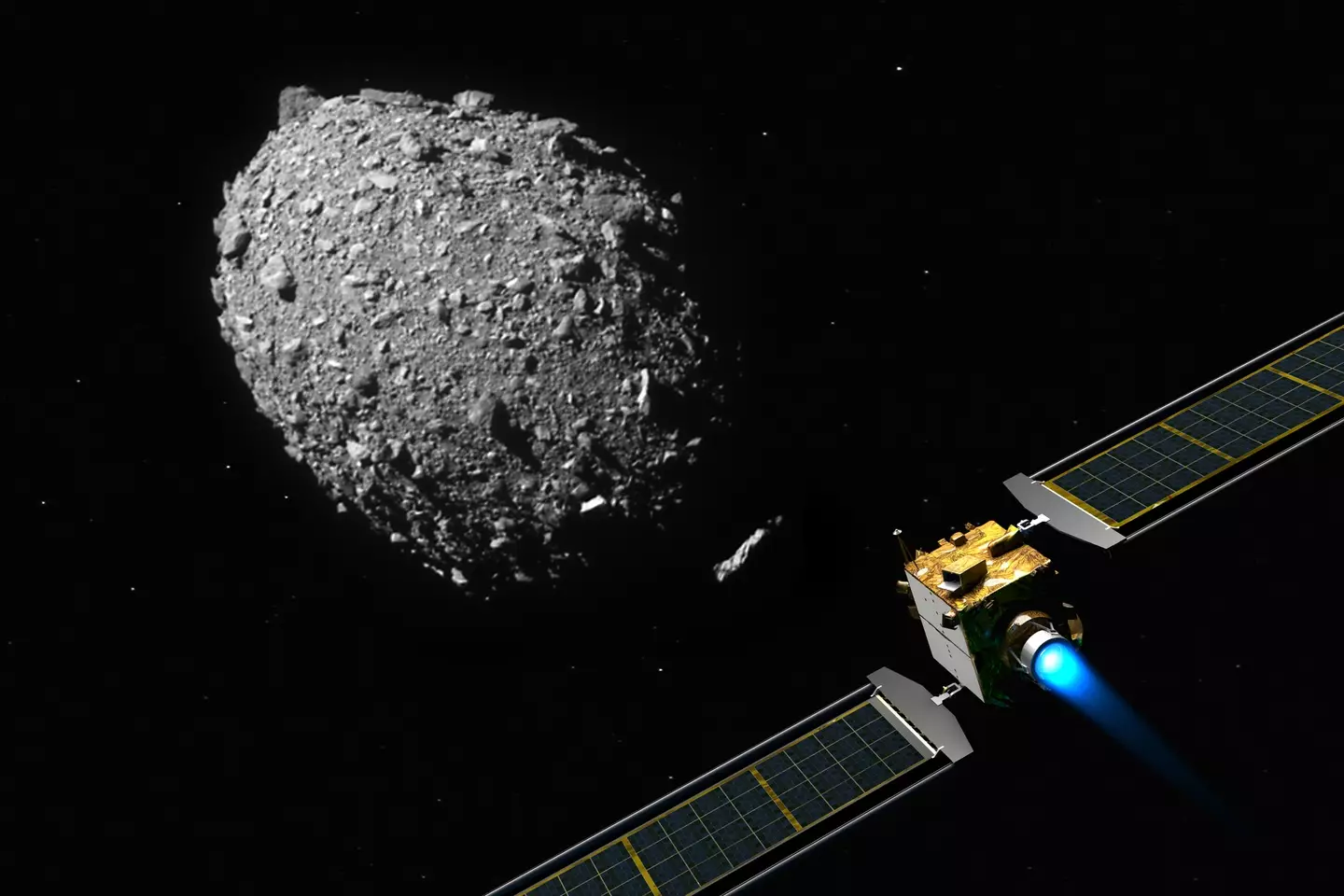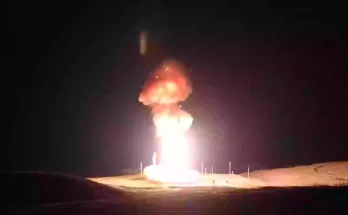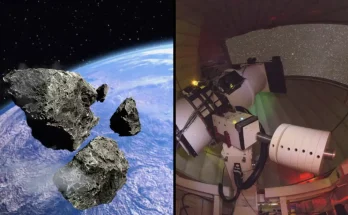NASA may have created the first human-made meteor shower
We’ve come a long way in 63 years after Yuri Gagarin from the Soviet Union became the first human to go into space in 1961.
And not only do we send people up there on the regular now, we also make our own meteor showers too.
This comes after NASA’s £300 million Double Asteroid Redirection Test (DART) spacecraft successfully slammed into tiny asteroid Dimorphos in 2022.
The groundbreaking mission – which demonstrated the potential to redirect a hazardous asteroid – could have inadvertently created the first human-made meteor shower called Dimorphids. Yes, the spelling is slightly different.
In NASA’s first attempt at defending us from a meaty asteroid, it seems that with two years of studying the aftermath, scientists can conclude that DART successfully managed to make Dimorphos move out of the way of harm.
However, it now also emerged in a new study that the collision caused more than two million pounds of rocks and dust to fall off, which could potentially create a meteor shower that will last for 100 years.
The good news is that the dust particles are unlikely to reach earth’s surface.

NASA may have created the first human-made meteor shower (Getty Stock Images)
“This material could produce visible meteors (commonly called shooting stars) as they penetrate the Martian atmosphere,” lead study author Eloy Peña Asensio, a postdoctoral researcher for the Deep-space Astrodynamics Research and Technology group at Italy’s Polytechnic University of Milan, told CNN.
“Once the first particles reach Mars or Earth, they could continue to arrive intermittently and periodically for at least the next 100 years, which is the duration of our calculations.
“They would disintegrate in the upper atmosphere through a process known as ablation, caused by friction with the air at hypervelocity.
“There is no possibility of a Dimorphos material reaching Earth’s surface.
“The resulting meteor shower would be easily identifiable on Earth, as it would not coincide with any known meteor showers.

NASA’s DART mission was a success (JIM WATSON/AFP via Getty Images)
“These meteors would be slow-moving, with peak activity expected in May, and primarily visible from the southern hemisphere, seemingly originating from near the Indus constellation.”
Study coauthor Michael Küppers added: “Personally, initially I was surprised to see that. “Although the impact happened close to Earth (at about an 11-million-kilometer distance), it is easier for the impact ejecta (debris) to reach Mars than to reach Earth.
“I believe the reason is that Didymos crosses the orbit of Mars, but stays just outside the orbit of Earth.
“This study tries to quantify this possibility and confirms that it may happen.
“Even if it relies on modelling that has its own uncertainties.”
Featured Image Credit: NASA/Johns Hopkins APL



